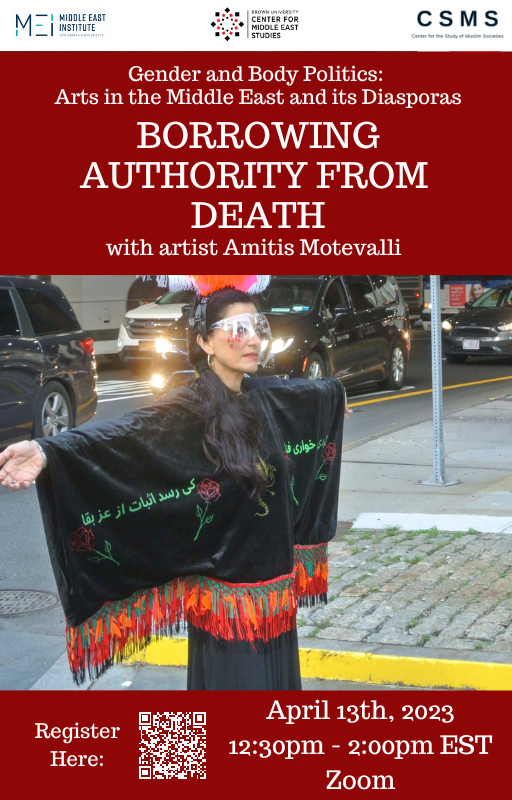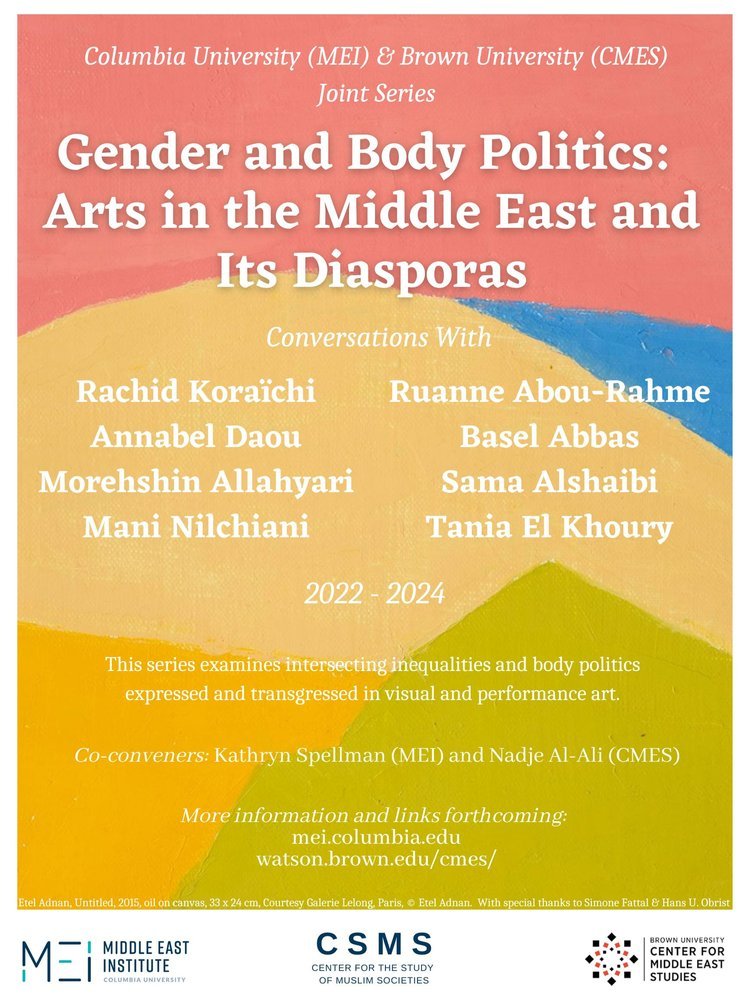In conversation with the artist Amitis Motavelli, we will discuss her work in relation to cultural resistance and survival of people living in poverty, conflict, and war. Through many mediums—including sculpture, video, performance, and collaborative public art – her work asks questions about violence, occupation, and the path to decolonization, while invoking the significance of a secular grassroots struggle. This conversation is part of a joint Middle East Institute (MEI) at Columbia University and Center for Middle East Societies (CMES) at Brown University series on gender, art and body politics in the Middle East and its diasporas. The series examines intersecting inequalities and body politics expressed, represented and transgressed in both visual and performance art.
Words from the Artist
“My family has been caretaker of a Shia shrine in Iran for generations. Our name, Motevalli, translates as "Keeper of the Shrine" and memories of childhood visits to the shrine permeate my work with an aesthetic and structural presence. My art aims to sustain the spirit and action of that shrine as a light for collective survival by merging the symbology of Islamic art and ritual with those of secular grassroots peoples’ movements for equality and justice worldwide.
Throughout my career as an artist and an educator for the past 20 years, my work has consistently explored and upheld the cultural resistance and survival of people, particularly women or femme identified individuals, living in situations of poverty, conflict, and war. I am drawn to the aesthetics of Islamic Art as rooted in devotion and love through resistance, rebellion against unjust authoritarianism and personal sacrifice and even contemporary mass-media imagery which has derailed the international perception of these messages. Using varied media including installation, performance, sculpture, painting and drawing, printmaking, textiles and needlework, video, and collaborative public art, I juxtapose iconography and iconoclasm to secularize the ritual and aesthetic of Islam while retaining the mysticism of Sufi dervish tradition.
My mediums and forms change, but the focus of my work stays in dialogue with signage and symbology from Iranian and Islamic art. They are significant in the construction of histories through documentation and archive. I explore methods which construct a collective perspective. This connective thread examines the creation of symbols or icons through persuasion or other means, and what gives power to images or language and how they enable philosophies or actions. My drive is to elucidate the power of the visual language of Islamic art, not its icons, iconoclasm and symbols directly. I am also influenced by symbology in American popular culture and movements, generated from within a people’s struggle for equality and justice, and how those symbols are also greedily bowdlerized in American media. My work then isolates and offers these symbols for discussion, exploiting the signifiers relayed through iconic symbols. It looks at how icons can be complemented through their various linguistic messages and how they can be manipulated to change historical circumstances.”
About this Series
In conversation with artists from the Middle East and North-Africa as well as its diasporas, the series examines intersecting inequalities and body politics expressed, represented and transgressed in both visual and performance art. Against the backdrop of war and conflict, the rise of authoritarian regimes, displacement and diaspora mobilization, Islamophobia, ongoing orientalist depictions, and challenges linked to the Covid 19 pandemic, this series explores the ways in which artists are informed by and/or contribute to anti-racist, transnational feminist and queer praxis.


